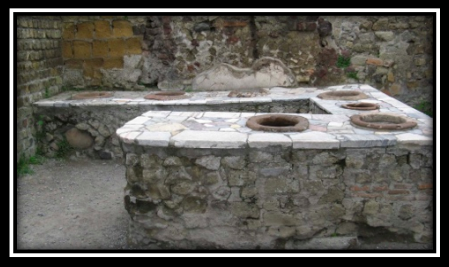
Click here for the full experience: the original pdf-formatted version of this article.
HOW TO CHOOSE YOUR WINE IN A RESTAURANT
Book of Bertil 10.01
PRELUDE:

The Wine List: A Disaster More and More Narcissistic Than Ever
I owe it to myself in this summer times to quench your thirst with a light and refresh reading while remaining instructive.
Dear readers, friends as emeritus members of Bonde Fine Wine, I would like to share with you today my great dismay, and my growing confusion every time I must read a wine list in a restaurant. If I, with more than 40 years of in-depth wine knowledge, find myself today lost in my own science, because I have the impression of reading a document written in a language and code I absolutely do not recognize, then how may I not suspect that you, happy consumers, have the impression of being at the heart of an arrogant deception? It may seem that the choice for wine on a wine list is like rolling the dice at a casino. For that I am so sorry.
So, in this Book of Bertil, I'll try to explain the rules of writing a wine list, and how to equip yourself with a backup parachute for your next bacchanal experience at the restaurant without having to shout "Mayday, mayday!"
I very much hope so.

Chapter 1. Verse 10.1
A Brief History of the Wine List
There are traces of wine lists dating back to ancient Egyptian times (~3100 BC). At that time these old wine lists were not intended to appear in a menu or in a restaurant, but rather to be used for the inventory and administration of wine service in royal houses. Although its structure and complexity has evolved, this format and its rules are still applied today. This format is the wine list of an establishment offering a permanent sommelier service for customers of the fine dining establishment. The second format of the wine list appeared under the Roman Empire with the creation of the caupona, an establishment offering lodging and serving wine where different vintages were sold there and bussed to the counter. These establishments also offered dried and savory dishes to enjoy on site. These are the first forms of taverns, buvettes, bistros, and neighborhood restaurants. This format had remained almost completely the same into the early 2000s, by now has been completely disintegrated and devolved into an almost anti-social and unfriendly structure—so what happened?
The Wine List: Classification Document
In a sommelier-employed restaurant, the wine list is always written according to precise rules of composition and prescriptions. It is intended to be a reference tool for the products available in the establishment. In the great classic tradition of service, the wine list is never given to the customer. The wine list is the sommelier's tool that allows him to communicate visual information about prices and the different vintages available, brought to the table and kept in the sommelier’s hand. Its composition is established by chronology and its complexity depends on the quantity and diversity of products available.
The following is example to understand the importance of international communicative rules that and the structure of a universal language of writing a wine list:
Type of wine (Sparkling, White, Red, Rose and Orange, Sweet wine, and Fortified wine)
Continent
Country
Greater Region
Region
Subregion
Sub-region of origin
Property Name
Proper name of the wine (or grape variety if used as the name on the label)
Vintage (or non-vintage NV)
Clos or Vineyard specific of origin of the grape Format (if applicable)
Price
To better understand, imagine your document storage chain or the way you order your documents on your computer. This is based on the same principle, and in general these are methods used by all. This is called a universal ranking method.

Chapter 1. Verse 10.2:
The Ordinary Wine Lists
The smaller the selection, the more non-existent the sub-selections will be. Let's take for example a neighborhood restaurant with a choice of 50 labels, covering the entire wine world (different countries). On this page there will be the following:
Types of wines (6 sparkling, 15 white, 15 red, 10 rosé and orange, 4 sweet and/or fortified wines),
Progressive organization in alphabetical order of the name of the properties, or the selling prices of the wines.
Type of wine
Property name; Proper name of the wine (or grape variety if used as the name on the label); Vintage (or not NV); Clos or Vineyard specific to the origin of the grapes; Sub-sub-region of origin; Sub-region; Region; Greater region; Country; Continent; Format (if applicable); Price.
Concrete Example
Red wine
Bonny Boone Cellars, La Cigarette Volante "Reserve" 2011, Delta Range Vineyard, Arroyo Seco, Monterey, Central Coast, CA, USA, North America. (Magnum) $150
From there, the freedom and creation of the person in charge of the wine list is allowed, categories or subcategories can be initiated, but its variables must always make it easier for the consumer to read and choose. In this case there is no expertise of the service of a sommelier, and therefore the consumer must have the most information accessible to make the most appropriate choice for their taste, budget, and curiosity.

The Wine list can be divided into sections by body (light to full), by methods (organic, sustainable, biodynamic, natural, etc.), by aromatics (light to super expressive), or by the type of grape. But in any case, the greater the lack of expertise in the dining room there is, the more essential it is for product information to facilitate the consumer's choice.
Because we must never forget that a disappointed customer is a lost customer.
Writing a perfect card would therefore be this:
Vin Rouge
Bonny Boone Cellars, La Cigarette Volante "Reserve" 2011
Delta Range Vineyard, Arroyo Seco, Monterey, Central Coast, CA, USA North America. (Magnum) $150
65% Grenache, 25% Mourvedre, 10% Syrah
Medium Body, Intense Ruby, Dry Wine, Fine Tannins, Candied Red Fruits, Coriander, Tabaco dry Vanilla, long finish. Biodynamic Method, 13.8% Alc., No addition of sulfite, Without Filtration.
Chapter 1 Verse 10.3:
The Fundamental Rules of the Proposed Wine Choices:
The choice of wines on a restaurant menu must take into consideration important factors other than that of presentation and writing. Here they are:
The pricelist for wines
The wine list must offer prices that reflect the prices of the main course dishes. The total sum of the two cheapest main courses, up to the total sum of the two most expensive dishes. So, if the cheapest main course is $20, and the most expensive dish is $42. Wine list prices should be between $40 to $84 per bottle.
Style
The choice of wines should complement the style and ethnic origin of the cuisine offered. This is the principle of the food and wine pairing. This is the body & vegetal aromatics agreeing with the food.
Age and the profile of the targeted clientele
The style of wine and the origin of the wines must reflect the conservative or adventurous preferences of the target clientele.
The type of products offered
Red meat (Steak House), fish and seafood, pasta, vegetarian dishes etc...

Chapter 2 Verse 10.1:
"The Perfect Storm: Be on Watch for a Devastating Tsunami
I still wonder what really happened to make restaurant wine lists what they are today. Most are illegible, pretentious, and non-rigorous. Most wine lists are written by individuals who know absolutely no rules of the art of wine writing and completely ignore the set of fundamental rules of trade and hospitality. Nearly impossible to decode, these new wine lists are exercises of egocentricity and offer only products, without options of taste or style, and only chosen to follow the trends of the moment or that of the buyer. There is no longer any coordination between the cuisine offered, the wines, or the clientele. But how did all this happen, when did you start selling wines for your own tastes and not those of your customers?
We the Gen X and Boomers
It probably all started with the millennial generation around 2010, but also with the neglectfulness of the baby boomers and generation X, regarding the current loss the meaning of the profession and the responsible commitment of work.
Then there is also globalization, the super-democratic wave of equality for all and at all costs, and the syndrome of excessive social media images, all this has flattened the world and its inhabitants. So should we be convinced that the world has become flat? And that we must endure it without revolting, even if we pay for it.

Believe me, I love the new generation of sommeliers, their curiosities, and their desires to give and share. It’s for all of us exited to realize as it’s time of the Sommelier Renaissance. But beware of restaurant or wine bar owners not to give your investment and entrepreneurial dreams to those who believe they all know because they have a basic level certificate. Do not let them freely impose their choices of the moment on your precious customers. And then, remember who signs the paycheck at the end - it's the customer.
Chapter 2 Verse 10.2

Mayday! Mayday! ....and me?
If you are waiting for a better world, here are some tips to help you limit unwanted surprises.
Speak to the person in charge of the wines.
The easiest way to find what you will like and ask the opinion and opinion of the Sommelier or the person responsible for the wine list. And don't forget not to be forced to have a wine imposed on you that you don't want.
Decide your budget.
First set a budget for wine and do not exceed it. Do not spend more than expected if there is no professional or sommelier available to guide you with certainty, do not spend more than the total of your two main courses for the total price of your bottle of wine.
Pick a color.
Decide the color of the wine by the color of the sauce of your dish that you are going to order. Nothing else.
Right body, right fit.
One of the secrets is to match as faithfully as possible the density of your protein on your plate with that of the body of the wine you choose.
The nose is the key.
In the same way that you tune your protein, now it's time to tune the primary aromatic of the wine. Be sure that the aromatic plants (herbs, spices, vegetables, fruits) on your plate are similar to those in the wine.

Phones at the table.
Ask your server about the plant aromatics of wines. They should mimic those in your dish. If there is no one to help you, it’s okay to open your phone and look up the wine on Vivino, google, or the wine app of choice.

Chapter 2 Verse 10.3
Conclusion
When all else fails...
If none of the choices speak to you or the prices are out of your desired range, a cocktail and a glass of water or a glass of wine.
Mr. B
*Memorandum: My words and opinions in these newsletters are and would always be personal, and I intend to offend. I always accept that others have the full right and duty to challenge me, to argue, and, if it is necessary, excommunicate me from their beliefs (often dull and hollow) because I would act the same way if it were the other way around.












